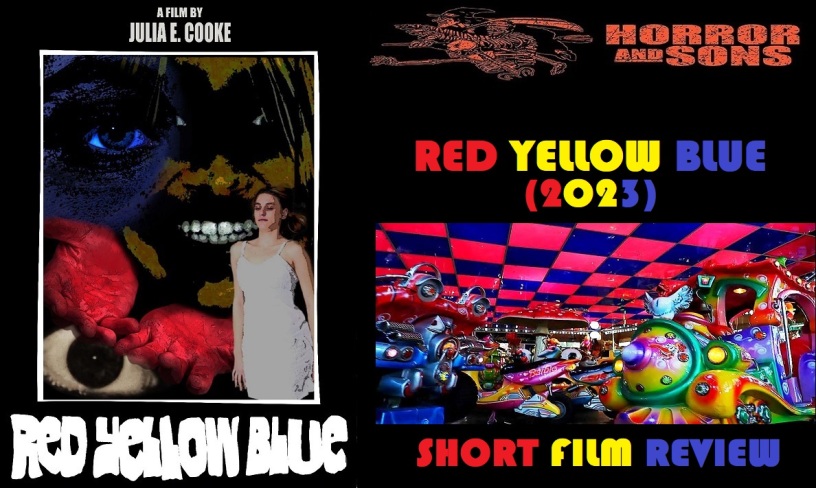Red Yellow Blue is a new short film written, directed, and edited by Julia E. Cooke. Produced on an extremely limited budget, the cast and crew of the film consists of only four people (Cooke included), mostly women and all first-time filmmakers. I chose to present the facts of the previous sentence early in this review so that those who may be tempted to make presumptions about the quality of film based on those specific factors can get said presumptions out of the way before I continue on with the review. And, no, I did not forget the commas in the title of the film.
The film opens, introducing us to a young woman (Talya Topzand) who has just recently arrived in Rome for what one assumes to be a vacation. The purpose for her trip is never actually disclosed, nor is her name. However, neither piece of information seems of much importance to the Red Yellow Blue‘s plot, and these omissions may be quite deliberate so as to allow the viewer to place themselves in the character’s shoes.
The woman visits an old church, where she happens to gaze upon a presumably ancient sculpture; a small statuette or possibly a religious idol of some sort. This encounter sets off what can only be described as a severe case of Stendhal syndrome, which (per the Wikipedia definition*) is described as “a psychosomatic condition involving rapid heartbeat, fainting, confusion, and even hallucinations, allegedly occurring when individuals become exposed to objects, artworks, or phenomena of great beauty and antiquity.”
From here, the woman spirals through a dizzying series of what appear to be hallucinations, each a stage in the progression (or regression, depending on one’s point of view) of her fractured mental state, and each represented by her appearance and environment fluctuating to the colors presented in the film’s title in order. While no other characters are featured in the film outside of the voice of the woman’s mother during a phone call, there is a demon-like presence (Sydney Stirewalt) that frequently appears to seemingly haunt her, but in reality may be nothing more than a manifestation of her inner turmoil.
Red Yellow Blue quite possibly will not appeal to the average “horror” fan, at least not those looking for the shocks, spooks, and scares that commonly accompany what most accept to be the standard “definition” and trappings of “horror”. There are also no monsters or madmen behind masks… that is, not unless one sees themselves as a monster or madman behind a mask.
Instead, the film subverts the normal expectations of “horror”, focusing on the terrors and fears that come from one’s struggles with mental illness. As someone who has faced (and is still facing) their own mental and emotional health issues (Have you ever wondered why this site has shut down for extended periods in recent years?), the journey that the woman faces throughout Red Yellow Blue was often quite relatable. Sometimes, uncomfortably so. The film examines various stages that many, even those dealing with common “everyday” stresses, may frequently find themselves experiencing. Chaos, fear, and anger, transitioning into dread, doubt, melancholy, and sorrow, before one is able to finally emerge into calmness, understanding, and peace. That is, if one is even fortunate enough to find such things awaiting them on the other side.
On the cinematic front, Red Yellow Blue is also quite visually and audibly impressive throughout. The camera work from cinematographer Jirapat Chaislip is frequently beautiful, and just as often haunting. There’s also a discernible layer of blur that creeps into the corners of shots as the woman descends through madness, while her final transition is quite brightly lit. A rather unique and compelling musical score complements the visuals every step of the way, which, when combined with the occasional sound effects, perfectly accentuate the stages of her trails.
For many, this review may serve as a potential condemnation for the film, alienating them from ever wanting to experience it for themselves as it’s not remotely close to what is commonly thought of when one hears/reads the word “horror”. Conceivably, for some, the subject matter may hit a little “too close to home”. Those things said, more adventurous cinephiles should seek out the “trip” that Red Yellow Blue presents. If nothing else, there’s some very unique and gifted filmmakers showcasing their creativity and talent with this film, and I personally look forward to seeing what their voices will say with future endeavors.
*Reference: https://en.wikipedia.org/wiki/Stendhal_syndrome




